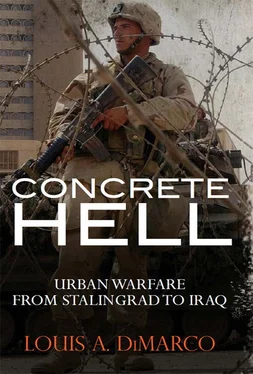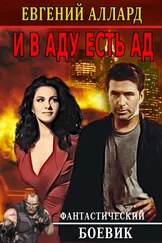The battle for Grozny demonstrated the importance and effects of information operations on urban combat in the digital communications age. The Russian government tried to prevent information leaving the battlefield rather than managing that information. Reporters were barred from moving with Russian troops and observing the battlefield freely from the Russian side. In contrast, the Chechen commanders encouraged the media to observe their operations and interview commanders and soldiers. The Chechens, using the media effectively, managed to portray the battle as sympathetic freedom fighters fighting against the oppressive army of a tyrannical regime. Despite the efforts of the Russian government, information reached the Russian population anyway, but that information often dramatically contradicted official Russian government statements and was sympathetic to the Chechen point of view. The Russian government quickly lost credibility with both the Russian people and the international community. Political opposition to Russian military operations consequently grew rapidly, both within and outside Russia.
The Russian military successfully seized the city of Grozny from the Chechen fighters in 1995. However, the methods they employed indicated the major characteristics of the Russian military. First, it was a blunt military instrument and incapable of precise operations. The Russian military did not outfight the Chechens, it overwhelmed them. Second, Grozny demonstrated that the Russian government did not understand the careful coordination between the instruments of national power necessary for success in urban operations in a digitally connected and global political environment. Russian disregard for information operations, collateral damage, and particularly civilian casualties gave the Chechens significant strategic advantages even as they lost the battle at the tactical level. Those advantages would build over time, and result in Chechen forces recapturing Grozny in the summer of 1996, and in the negotiated withdrawal of Russian forces from Chechnya that same year. A formal treaty between the Chechen government and the Russian government was signed in 1997 which stabilized the relationship between the two governments until the war began anew in 1999.
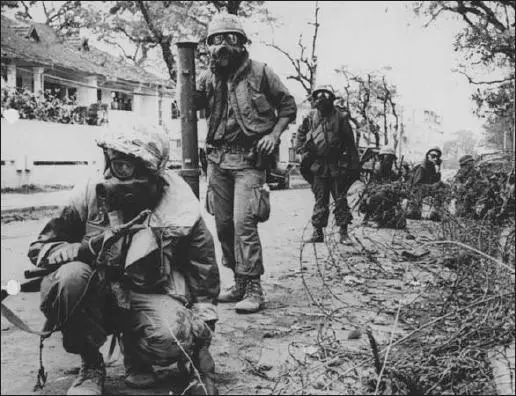
Marines wearing protective masks prepare to employ CS gas and assault a building to clear out snipers. The use of CS gas as part of military operations has since been outlawed by international agreement, though it is still used widely for riot-control purposes. (Getty)
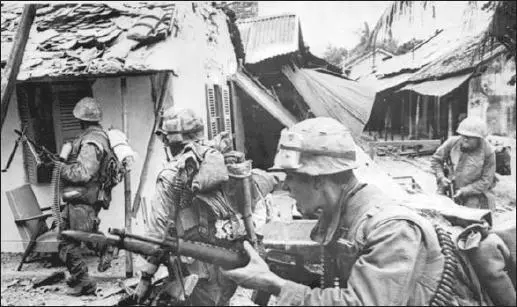
Marine infantry of the 1st Battalion, 5th Marines, fight their way from house to house in the old city north of the Perfume River. The lead Marine on the left in this photo is armed with the M-60 light machine gun and carries a smoke grenade. The other Marines are armed with M-16 assault rifles and carry extra ammunition for the machine gun. (Topfoto)
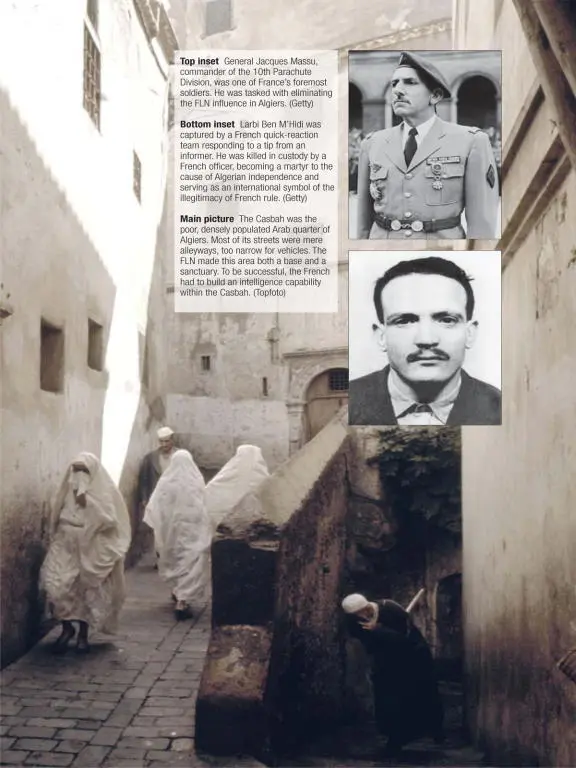
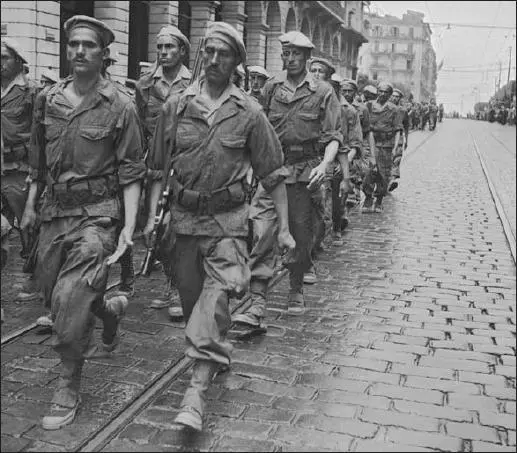
French paras enter Algiers. The French paratroopers were the elite of the French army and, with extensive experience in Vietnam, considered experts in revolutionary warfare. (Getty)
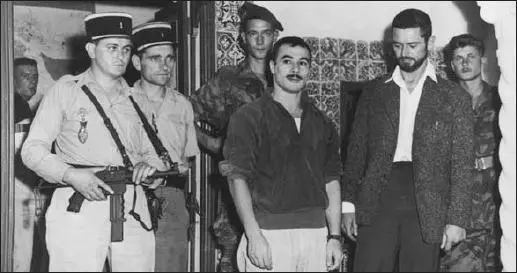
Yacef (center) was the leader of the FLN’s military arm in Algiers. He established an extensive network of bomb-makers, bombers, and supporters throughout the Casbah. This network was systematically destroyed by the French through the use of very controversial interrogation techniques, including torture. (Getty)

Soldier of the 3rd Battalion, The Light Infantry, passes ruined terraced housing during a patrol of one of the Peace Lines in Belfast in 1977. Poverty and lack of opportunity were legitimate grievances of the Catholic community and led to the beginning of the war. These grievances could only be answered with political action. (IWM, MH30550)
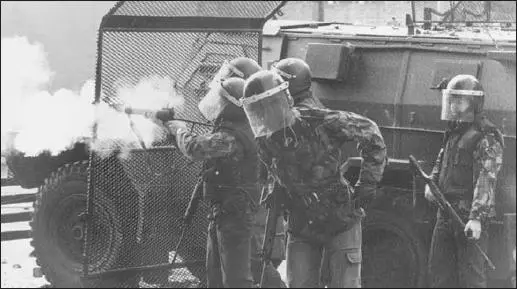
Soldiers from 2nd Battalion, Royal Anglian Regiment, fire baton rounds at rioters during “hunger strike riots” in Bogside, Londonderry, 1981. (IWM, HU41939)
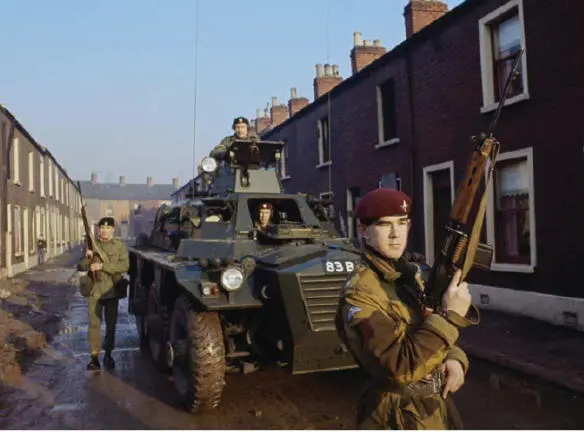
An officer of the 1st Battalion, The Parachute Regiment, and lance corporal of the 2nd Battalion, The Queen’s Regiment, patrol a Belfast street with a Saracen wheeled armored personnel carrier (APC). Both Saracen APCs and Ferret armored cars were used for many years in Northern Ireland because of the protection they provided their occupants. Because they were wheeled vehicles their use was less controversial than a deployment of tracked armored vehicles would have been. (IWM, TR32986)
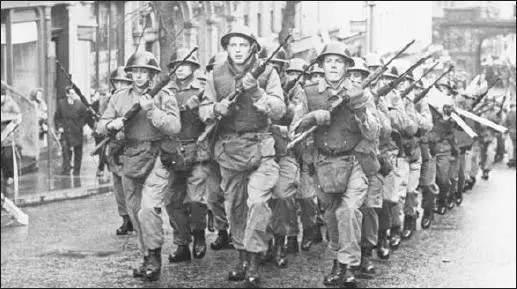
A Company, 1st Battalion, The Gloucestershire Regiment, moves up to the Diamond, Londonderry, to control a riot between Protestant and Catholic women in 1970. (IWM, HU43396)
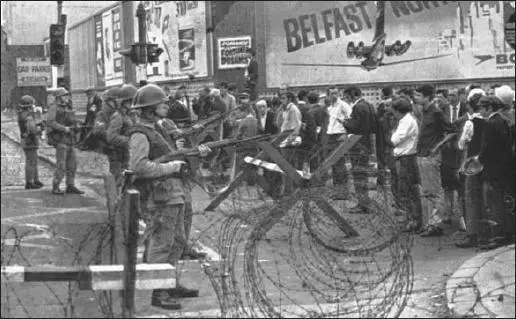
British troops guard a barricade in the early months of the conflict. When first deployed to Northern Ireland the British Army was seen as a neutral arbitrator in the conflict, but events quickly forced the army to support the sectarian government of Northern Ireland. (Topfoto)

The results of a deadly PIRA bombing in Belfast on March 20, 1972: seven were killed and over 150 injured. This was the most violent year of the entire campaign with a total of 479 people losing their lives. Bombing was the tactic of choice of the PIRA. It was a pure terror weapon that most often resulted in random civilian casualties. (Fred Hoare)
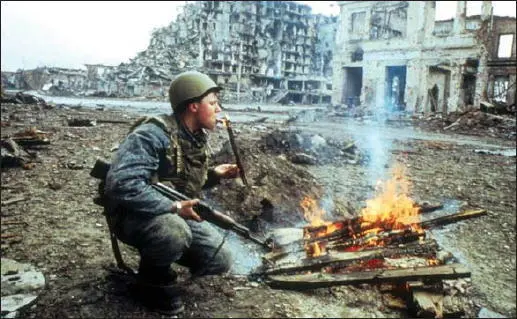
Russian soldier in Grozny. The Soviet troops, although superbly equipped, were mostly poorly trained conscripts — in their initial exposure to urban combat they performed miserably. The buildings in this photo demonstrate that the Russians’ response to tactical challenges was often massive artillery bombardment which ultimately destroyed much of the city. (Topfoto)
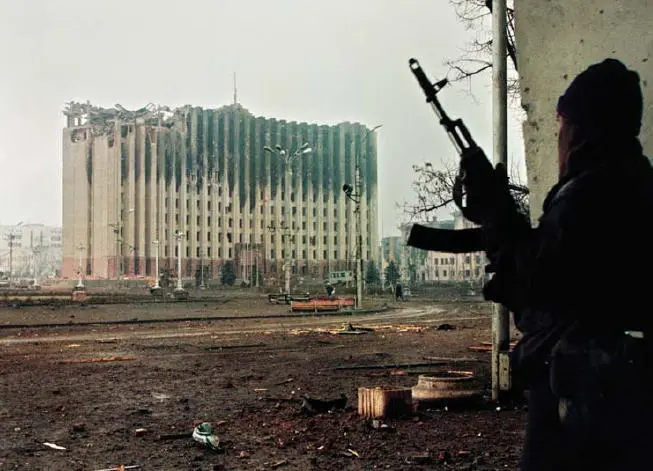
Chechen fighter outside the Presidential Palace. This was the primary objective of the New Year’s Eve Russian assault. The command of the Chechen resistance was in a bunker in the basement of this building and remained active until overrun by Russian troops. (Getty)
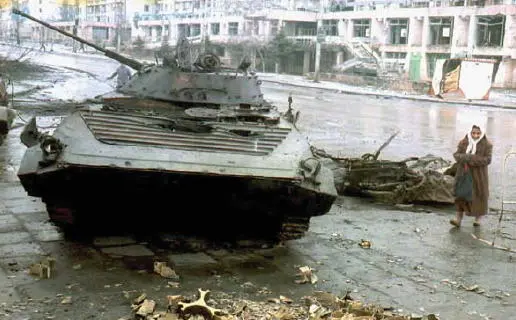
A destroyed Russian BMP2 armored personnel carrier in Grozny. These vehicles, armed with a very effective 30mm cannon and carrying a squad of infantry in the rear, had the potential to be very effective in urban combat. However, poor command and control combined with hastily assembled and undertrained units resulted in the Russian debacle on New Year’s Eve, 1994. (Getty)
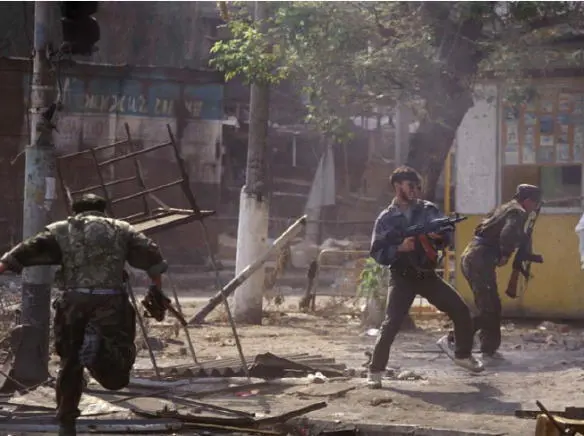
Chechen fighters on the streets. Organized into groups of about 25 men, armed with a variety of Russian weapons and cast-off Russian uniforms, led by experienced former Russian army leaders, and fighting in their own city, the Chechen mobile combat groups were formidable foes. (Getty)
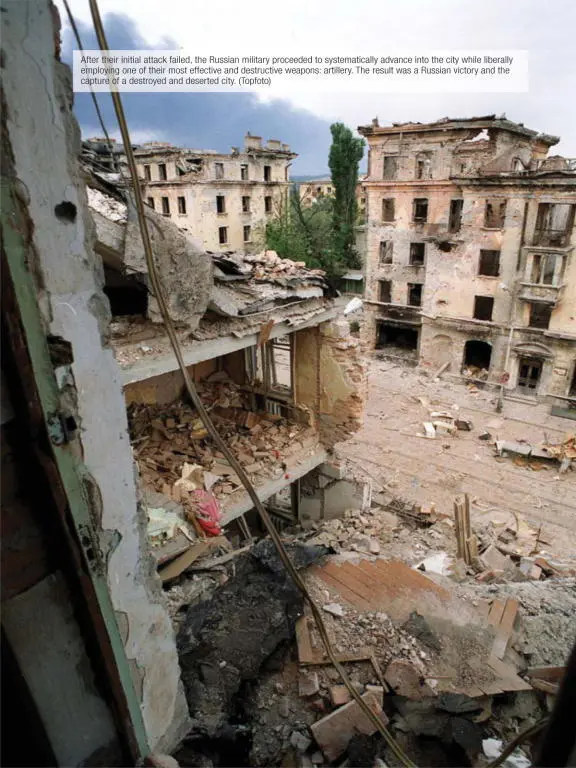
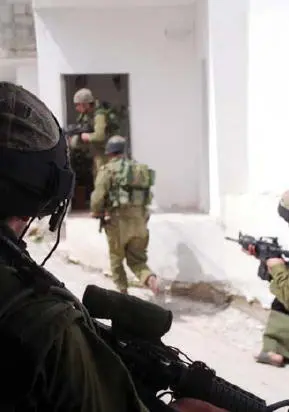
Israeli infantrymen, armed with the M-4 carbine variant of the M-16 assault rifle, move carefully from house to house in Jenin. (IDF)
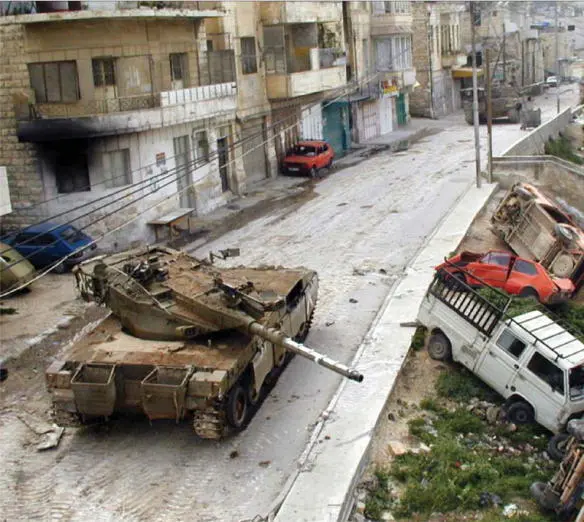
Merkava tanks move through Jenin as part of Operation Defensive Shield . The Israeli military employed large numbers of armored vehicles as part of the operation largely because the armored protection reduced friendly casualties. (IDF)

The Israeli military made use of a variety of types of infantry in the urban operations in the West Bank depending on the difficulty of the mission. The different types included reservists, regular mechanized infantry, paratroopers, and special operations forces. (IDF)
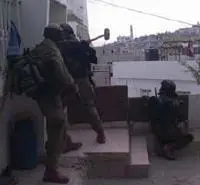
Israeli infantry enter a building in Jenin using a sledgehammer. The IDF operations in the West Bank were security operations in a hostile country rather than classic counterinsurgency. There was no friendly civilian population and no attempt to win “hearts and minds.” (IDF)
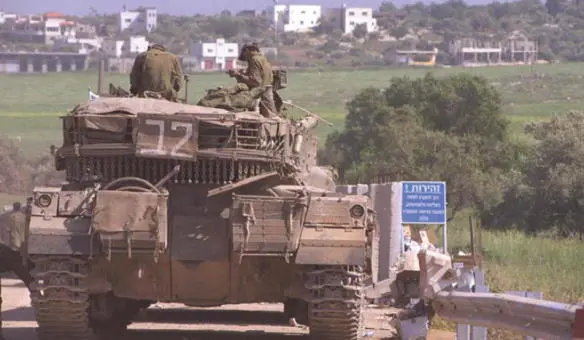
A Merkava tank observes Jenin. Another role of armor was to isolate the urban areas and control traffic in and out. Stationary outposts built around tanks were designed to prevent the escape of fighters from the urban objectives. (IDF)
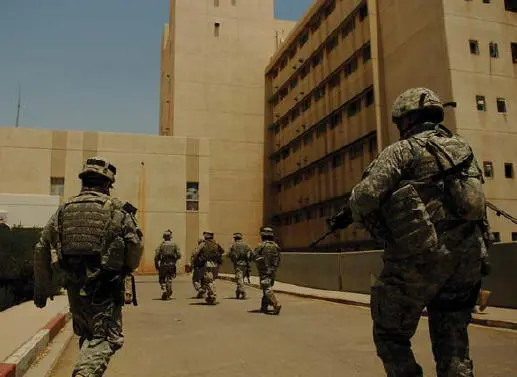
1BCT Commander Colonel Sean MacFarland and his security detail enter Ramadi hospital, the largest and most modern building in the city, in July 2006. It would be several weeks before US Marines established sufficient presence in the area and were able to declare the hospital under US control. (Defence Mil)
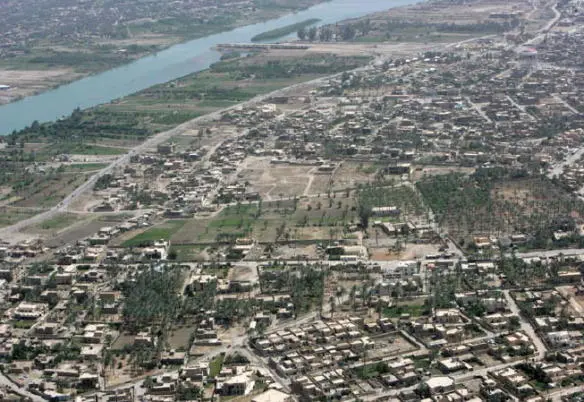
Aerial view showing the Euphrates River as it runs north of Ramadi. The river was an important and imposing terrain feature. Controlling the river using riverine forces was an important aspect of 1BCT’s plan to secure the city.
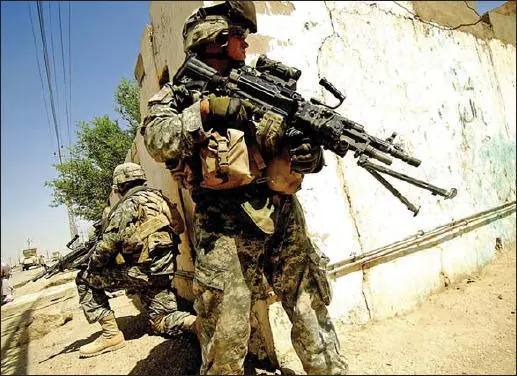
Infantrymen of Team B, Task Force 1st Battalion, 35th Armored Regiment, provide security from a street corner during a foot patrol in the Ramadi suburb of Tameen. Both soldiers are armed with M249 5.56mm light machine gun. (US Military)
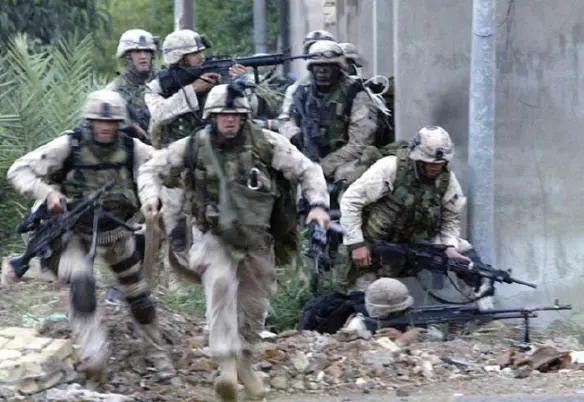
US Marines in urban combat in Iraq. This picture illustrates some of the equipment employed routinely in urban combat in Iraq including googles (day and night), protective knee pads, M-240 machine guns, M-16 assault rifles, body armor, and a variety of weapons optics including night scopes and flashlights. (USMC)
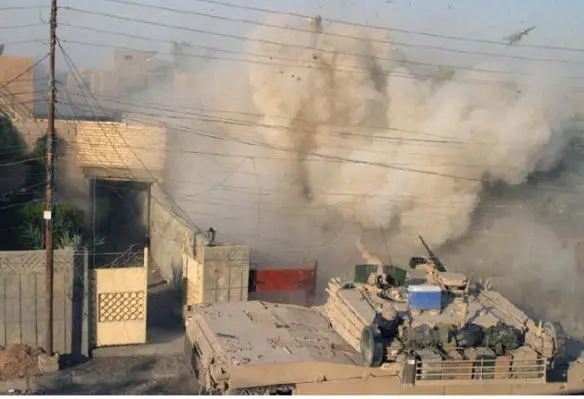
An M-1A1 Abrams tank suppressing insurgents during a firefight. The protection and firepower of the tank was an integral part of the operations of the 1BCT as it secured Ramadi. The pyschological effect of tanks and tank-fire on the enemy was as important as the material benefits the tank contributed to operations. (USMC)
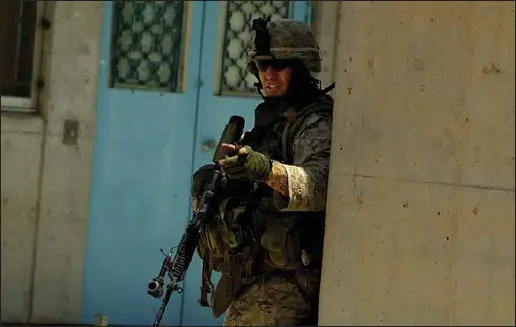
A USMC infantryman in Ramadi. The infantry, as in all urban operations, was the centerpiece of operations in Ramadi. In Ramadi the infantry, US Army and Marine alike, practiced the “three block war”: intense fighting on one block, assisting police and guarding infrastructure on another block, and providing humanitarian relief and economic assistance on a third block. (USMC)
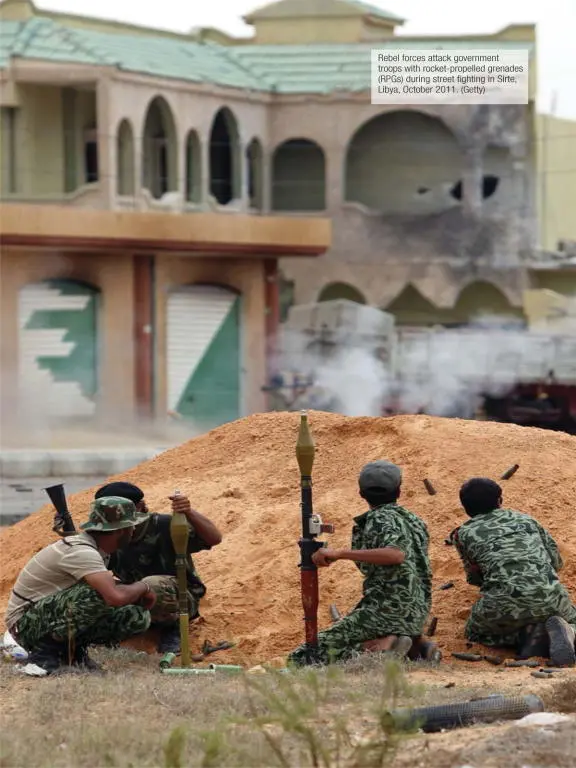
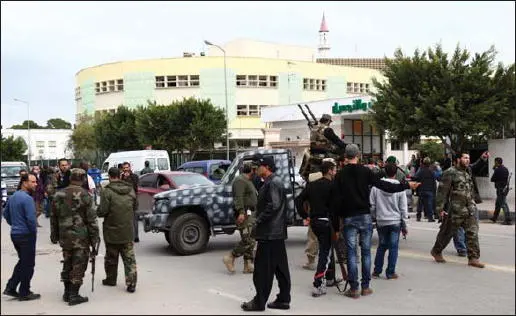
The Libyan rebel army occupies the capital city of Tripoli in January 2012. One of the challenges of hybrid urban warfare is distinguishing friendly fighters from enemy fighters as both sides may wear the same uniform, or no uniform, and will likely be using the same or similar equipment. (Getty)
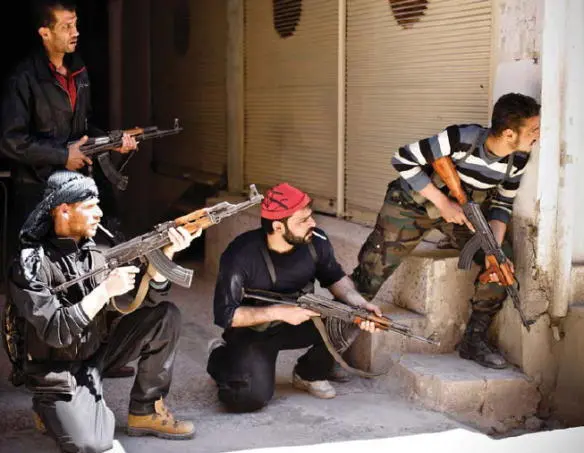
Syrian rebels fighting government forces in Aleppo, April 2012. The face of future urban warfare will not be that different from urban warfare of the past. The combatants will likely be indistinguishable from combatants seen in Iraq, Ireland, Algeria, or Hue, may be armed with similar small arms and RPGs, and will probably practice similar tactics. (Getty)
Читать дальше
